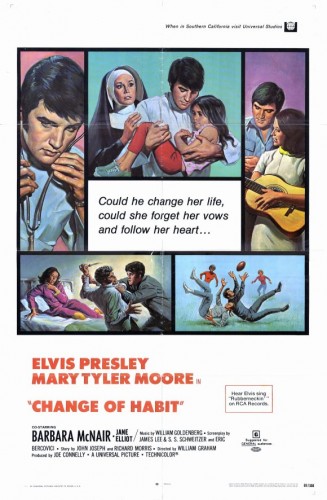
 Yikes! The NY Times ran a lengthy piece by Charles Duhigg this past weekend about absurdly precise, borderline Big Brother market research techniques that companies like Target (pun sort of intended…sigh) are pioneering to capture our dollars. The article doubles as an overview of recent breakthroughs in the study of habit formation, and it’s disconcerting on a number of levels.
Yikes! The NY Times ran a lengthy piece by Charles Duhigg this past weekend about absurdly precise, borderline Big Brother market research techniques that companies like Target (pun sort of intended…sigh) are pioneering to capture our dollars. The article doubles as an overview of recent breakthroughs in the study of habit formation, and it’s disconcerting on a number of levels.
For our purposes, the main ‘takeaway’ isn’t exactly news: we are all creatures of enormous habit, much of which is unconscious, and regardless of how autonomously we like to think of ourselves, it is our painful predictability that unites us – at least according to the alarming amount of data being collected every time we swipe our credit cards. (In fact, if the Target ads themselves are to be taken at face value, one of our most ironically bankable traits is our collective obsession with individuality.) Also, when we kick a certain habit, it’s almost always by exchanging it for a different habit, rather abandoning habit altogether – even when we are aware of our habit-forming process/inclination. That is, we may change crayons but we still have to color within the lines of human limitations/bondage (and the this-for-that Law-based system of punishment and reward). Moreover, significant changes in behavior are rarely a result of conscious decision-making or willpower – they tend to coincide with major events in our lives, such as the birth of a child or a divorce. Such interruptions in circumstance change us, rather than the other way around.
Some might say this is simply more grist for the cynicism mill, especially as it relates to the more dehumanizing and invasive elements of Madison Ave. And they wouldn’t be wrong, as far as it goes. But a Christian might see it as further confirmation that we are the object of life’s ups and downs, rather than their subject, that perhaps it’s no coincidence that the Good News addresses those who can’t/don’t bring anything ‘to the table,’ and for whom Hope must take an external form if it’s to be of any lasting comfort. The Gospel addresses reality, in other words – thank God. In this light, upheavals take on a more hopeful aspect, do they not? Now, if you’ll excuse me, I need to figure out a new brand of baby wipes, STAT:
Andrew Pole had just started working as a statistician for Target in 2002, when two colleagues from the marketing department stopped by his desk to ask an odd question: “If we wanted to figure out if a customer is pregnant, even if she didn’t want us to know, can you do that? ”
Almost every major retailer, from grocery chains to investment banks to the U.S. Postal Service, has a “predictive analytics” department devoted to understanding not just consumers’ shopping habits but also their personal habits, so as to more efficiently market to them. “But Target has always been one of the smartest at this,” says Eric Siegel, a consultant and the chairman of a conference called Predictive Analytics World. “We’re living through a golden age of behavioral research. It’s amazing how much we can figure out about how people think now.”
As the ability to analyze data has grown more and more fine-grained, the push to understand how daily habits influence our decisions has become one of the most exciting topics in clinical research, even though most of us are hardly aware those patterns exist. One study from Duke University estimated that habits, rather than conscious decision-making, shape 45 percent of the choices we make every day, and recent discoveries have begun to change everything from the way we think about dieting to how doctors conceive treatments for anxiety, depression and addictions… For companies like Target, the exhaustive rendering of our conscious and unconscious patterns into data sets and algorithms has revolutionized what they know about us and, therefore, how precisely they can sell.
The process within our brains that creates habits is a three-step loop. First, there is a cue, a trigger that tells your brain to go into automatic mode and which habit to use. Then there is the routine, which can be physical or mental or emotional. Finally, there is a reward, which helps your brain figure out if this particular loop is worth remembering for the future. Over time, this loop — cue, routine, reward; cue, routine, reward — becomes more and more automatic. The cue and reward become neurologically intertwined until a sense of craving emerges. What’s unique about cues and rewards, however, is how subtle they can be. Neurological studies like the ones in Graybiel’s lab have revealed that some cues span just milliseconds. And rewards can range from the obvious (like the sugar rush that a morning doughnut habit provides) to the infinitesimal (like the barely noticeable — but measurable — sense of relief the brain experiences after successfully navigating the driveway). Most cues and rewards, in fact, happen so quickly and are so slight that we are hardly aware of them at all. But our neural systems notice and use them to build automatic behaviors.
Habits aren’t destiny — they can be ignored, changed or replaced. But it’s also true that once the loop is established and a habit emerges, your brain stops fully participating in decision-making. So unless you deliberately fight a habit — unless you find new cues and rewards — the old pattern will unfold automatically.
“We’ve done experiments where we trained rats to run down a maze until it was a habit, and then we extinguished the habit by changing the placement of the reward,” Graybiel told me. “Then one day, we’ll put the reward in the old place and put in the rat and, by golly, the old habit will re-emerge right away. Habits never really disappear.”
Our relationship to e-mail operates on the same principle. When a computer chimes or a smartphone vibrates with a new message, the brain starts anticipating the neurological “pleasure” (even if we don’t recognize it as such) that clicking on the e-mail and reading it provides. That expectation, if unsatisfied, can build until you find yourself moved to distraction by the thought of an e-mail sitting there unread — even if you know, rationally, it’s most likely not important. On the other hand, once you remove the cue by disabling the buzzing of your phone or the chiming of your computer, the craving is never triggered, and you’ll find, over time, that you’re able to work productively for long stretches without checking your in-box.
When some customers were going through a major life event, like graduating from college or getting a new job or moving to a new town, their shopping habits became flexible in ways that were both predictable and potential gold mines for retailers. The study found that when someone marries, he or she is more likely to start buying a new type of coffee. When a couple move into a new house, they’re more apt to purchase a different kind of cereal. When they divorce, there’s an increased chance they’ll start buying different brands of beer.
Consumers going through major life events often don’t notice, or care, that their shopping habits have shifted, but retailers notice, and they care quite a bit. At those unique moments, Andreasen wrote, customers are “vulnerable to intervention by marketers.” In other words, a precisely timed advertisement, sent to a recent divorcee or new homebuyer, can change someone’s shopping patterns for years.
And among life events, none are more important than the arrival of a baby. At that moment, new parents’ habits are more flexible than at almost any other time in their adult lives. If companies can identify pregnant shoppers, they can earn millions.
About a year after [market researcher Andrew] Pole created his pregnancy-prediction model, a man walked into a Target outside Minneapolis and demanded to see the manager. He was clutching coupons that had been sent to his daughter, and he was angry, according to an employee who participated in the conversation.
“My daughter got this in the mail!” he said. “She’s still in high school, and you’re sending her coupons for baby clothes and cribs? Are you trying to encourage her to get pregnant?”
The manager didn’t have any idea what the man was talking about. He looked at the mailer. Sure enough, it was addressed to the man’s daughter and contained advertisements for maternity clothing, nursery furniture and pictures of smiling infants. The manager apologized and then called a few days later to apologize again.
On the phone, though, the father was somewhat abashed. “I had a talk with my daughter,” he said. “It turns out there’s been some activities in my house I haven’t been completely aware of. She’s due in August. I owe you an apology.”
[youtube=http://www.youtube.com/watch?v=ya7hraIbLZ8&w=500]
Using data to predict a woman’s pregnancy, Target realized soon after Pole perfected his model, could be a public-relations disaster. So the question became: how could they get their advertisements into expectant mothers’ hands without making it appear they were spying on them? How do you take advantage of someone’s habits without letting them know you’re studying their lives?
…for pregnant women, Target’s goal was selling them baby items they didn’t even know they needed yet. “With the pregnancy products, though, we learned that some women react badly,” the executive said. “Then we started mixing in all these ads for things we knew pregnant women would never buy, so the baby ads looked random. We’d put an ad for a lawn mower next to diapers. We’d put a coupon for wineglasses next to infant clothes. That way, it looked like all the products were chosen by chance.
“And we found out that as long as a pregnant woman thinks she hasn’t been spied on, she’ll use the coupons. She just assumes that everyone else on her block got the same mailer for diapers and cribs. As long as we don’t spook her, it works.”
In other words, if Target piggybacked on existing habits — the same cues and rewards they already knew got customers to buy cleaning supplies or socks — then they could insert a new routine: buying baby products, as well. There’s a cue (“Oh, a coupon for something I need!”) a routine (“Buy! Buy! Buy!”) and a reward (“I can take that off my list”). And once the shopper is inside the store, Target will hit her with cues and rewards to entice her to purchase everything she normally buys somewhere else. As long as Target camouflaged how much it knew, as long as the habit felt familiar, the new behavior took hold.
[youtube=www.youtube.com/watch?v=Ini98RV2r9Y&w=600]

COMMENTS
3 responses to “Targeted Shopping Habits and Preemptive Diaper Ads”
Leave a Reply















This article is both amazing and disturbing… not that Target would put out customized ads, but that we could be so easily manipulated.
This American Life aired an episode this weekend that refers to Duhigg’s book in the area of gambling addiction – specifically Blackjack.
After listening, I searched Mbird for posts about Duhigg… and lo & behold, this came up. 🙂
Here is the link to the TAL episode if interested in covering it further:
http://www.thisamericanlife.org/radio-archives/episode/466/blackjack
Also related:
http://www.scientificamerican.com/article.cfm?id=power-of-habit-excerpt